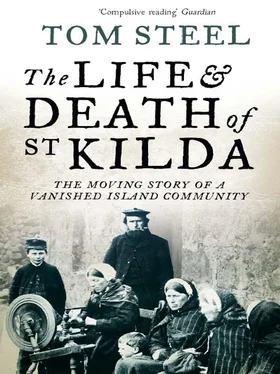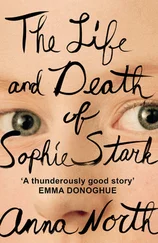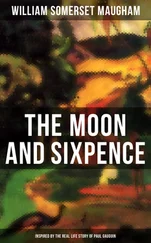In House no 5, Main Street, St Kilda, Annie Ferguson was busy at her spinning wheel. She was preparing yarn for a length of cloth that a tourist from the mainland had asked her to make. She would not finish the work, that she knew; but she would take the yarn to the mainland with her and in the coming winter months her husband would weave the tweed on the old loom they were taking with them.
In the other room of the house a young newspaperman was finding it difficult to pen his copy. Alasdair Alpin MacGregor, then thirty-one, had been sent all the way from London by The Times to report on the evacuation. As he sat close to the small window to catch the falling light, the paper he was writing on became wet in the heavy atmosphere. He struggled on, knowing he would have to wire his story as soon as he boarded the SS Dunara Castle.
On the advice of Nurse Williamina Barclay, the St Kildans had decided to take with them only those few possessions that could be of use to them in their new life. All through the day, heavy bundles were carried from the houses to the jetty. The women were busy packing kists with the few clothes and heirlooms each family possessed. They were also packing the wool taken that summer from the island sheep. It would be a waste to leave it behind; it could prove to be a useful source of income. Even in their new homes the St Kildans could knit and weave as they had done for generations to help supplement the new reward for their labour called wages.
Down by the old storehouse, used for over a century by the St Kildans to lay aside the produce they had bartered with those on the mainland, a few of the men were busy sawing up bits of wood. They were concerned to protect the few pieces of furniture being taken away from becoming damaged in transit. With battens and rope they made safe the tables and chairs that were to be transported to Lochaline in Argyll. Others were occupied at the back of the manse, sifting through the driftwood that had been cast ashore over the years. Much of the wood was the cargo of a freighter torpedoed off St Kilda in 1917. The big planks of timber, the men agreed, might be of use; they too would be loaded onto the Dunara Castle, due to arrive at St Kilda that day.
To the right of the schoolhouse, about a hundred yards from the jetty, the remainder of the St Kildans’ sheep were bleating in the calm air. Six hundred and sixty-seven sheep had already been transported by the SS Hebrides to the marts of Oban on 6 August. In July the Scottish Department of Agriculture had sent out an official and two shepherds from Uist along with their dogs to help the islanders round up their sheep. The task had not been an easy one. Many sheep had gone over the steep cliffs rather than be captured; many like those on Boreray had to be left undisturbed because taking them off proved impossible, given the time and manpower resources available.
To begin with, the St Kildans had stubbornly refused to help gather their scattered flocks. It had been suggested that the money obtained from their sale should go towards paying for the evacuation of the community. The islanders felt that if the government wanted to remove the sheep, they could do the work. One islander, old Finlay Gillies, had gone as far as to take to his bed the day before the rounding-up was due to begin, claiming that he was too sick to get up. The missionary Dugald Munro suggested to Macaulay, the Department’s representative, that the situation might be eased if the government offered the St Kildans money in exchange for their help. When the islanders heard that they would be paid a pound a day, even Finlay Gillies was seen catching sheep along with the rest of the men among the cliffs. Removing the sheep from St Kilda proved a costly business. It cost the government over £240 to transport twelve hundred sheep to the mainland, plus £143 in wages and expenses for the shepherds. By the time the sheep had been dipped and penned at Oban until their sale on 3 September, the total cost was £506 os 4½d.
At five o’clock in the afternoon the island dogs announced the arrival of the SS Dunara Castle. As she steamed like a ghost ship through the heavy mist into the bay, the islanders dragged their boats down the slipway into the water to go out and meet her. There was the hope of a last letter from friends on the mainland, eager to wish them well, and the chance to sell to the thirty or so visitors on board the few remaining socks and scarves the women had knitted. The last tourists to visit the island inhabited hoped to buy a spinning wheel or some other relic of life on St Kilda from a people only too eager to be rid of them. They were to be unlucky. The island had been stripped of most souvenirs in the few weeks since the world had got to know that St Kilda was to be abandoned. When the visitors had been rowed ashore, the St Kildans returned to the most pressing business of the day – the transfer of the sheep.
They had arranged the sheep in groups so that they could be loaded more easily into the boats that would take them out to the Dunara Castle. There were over five hundred sheep to put on board. It was a slow, tiring business; to and from the steamer, the islanders plied boats that could hold no more than a dozen sheep at a time. It was not until after nine o’clock in the evening that the majority of the sheep were safely on board. By then it was getting dark and dangerous to do much more; the few lanterns cast little light on the operation and the jetty was crowded with tea chests and bits of furniture. But work continued, and it was not until one o’clock in the morning that the nine fit men on the island struggled for over an hour to pull the boats up the slipway clear of the high-water mark.
At approximately three o’clock in the morning ‘The Books’ were brought out, and in the house of the Fergusons, Alasdair Alpin MacGregor joined in the day’s last act of reverence to the Almighty. After a few verses of a psalm to the tune ‘Wiltshire’, ‘The household’, wrote the man from The Times, ‘was so tired that we contented ourselves with a short reading and a shorter prayer. In the small hours we dragged ourselves to bed knowing that at daybreak we had to resume the shipping of the sheep.’
At first light the St Kildans were awakened by the siren of the SS Dunara Castle. The crew were anxious to complete the work and return to the mainland. After breakfast and family prayers, the St Kildans once again pushed their little boats into the water and took the last of the sheep on board. Then came the turn of the cattle, which had to be enticed down to the jetty with handfuls of soda scone. The four young calves were rowed over to the waiting ship in one boat, whilst the cows, tethered to the tail of the small craft in case they drowned, had to swim. The last ten cows of St Kilda were taken over to the Dunara Castle and hoisted aboard.
At approximately seven o’clock in the morning of 28 August, HMS Harebell, under the command of Captain Barrow, steamed into the bay. She had been sent by His Majesty’s Government to carry out the evacuation of the islanders. The Harebell, the senior ship of the Fishery Protection Squadron, had spent the summer months touring the fishing ports of the British Isles. The ship had left Oban and crossed to St Kilda during the night. ‘We knew we were due for this,’ recalls Commander Pomfret, then medical officer on board, ‘so we had fitted it in.’
In the corrugated iron shack that served as a post office, Neil Ferguson was busy getting ready the last mailbags to leave St Kilda. It was the largest mail ever to leave the island. Many on the mainland whose interest had recently been aroused by the publicity given to the evacuation in the newspapers were eager to obtain a St Kilda postmark by way of the passengers on board the steamer. As the tourists crowded the small office they complained bitterly when Neil ran out of penny stamps and demanded that he supply them with two halfpenny stamps instead. When there were no more halfpenny stamps Neil could only offer them three-halfpenny ones. Tempers became frayed.
Читать дальше












